Showing 31–40 of 72 results
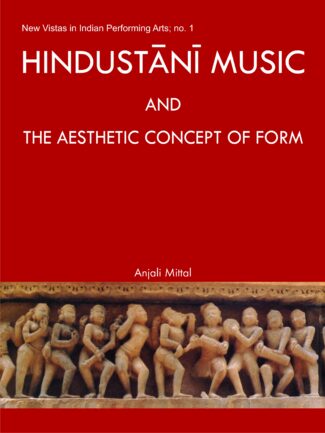
It studies the concept of form in the context of art, specifically Hindustani music. It investigates the underlying philosophical aesthetics and some aesthetical concepts and analyses the basic forms of raga and tala.
With its roots in the Samaveda (which treats it as a divine art), music in India has a long, splendid tradition. Over the centuries, it has absorbed fresh influences and experimented with new forms to finally evolve into two meticulously codified classical systems: Hindustani and Carnatic. In todays growing library of writings on Hindustani music, Anjali Mittals research is yet another valuable addition adopting, as it does, a viewpoint which has been neglected so far, namely, the viewpoint of contemporary western aesthetics. It is for the first time that this monograph examines the concept of form in Hindustani classical music. In this context, analytic attention has been focussed on some select compositions in dhruvapada, dhamar, tarana, vilambit and drut khyal genres of Hindustani classical vocal music. A wide variety of drut tanas has also been analysed in terms of notation and linear diagrams. Such diagrams, in fact, distinguish the present volume. Analysis of some rhythm-cycles and rhythmic patterns is another feature of this book. Thoroughly documented and written in a jargon-free language, the study includes a contextual discussion of aesthetics, artistic expression, aesthetic predicates and, above all, the concept of artistic form. The work may be expected to interest all those who want an analytic understanding of what form (or bandisha) means in the region of Hindustani classical vocal music.
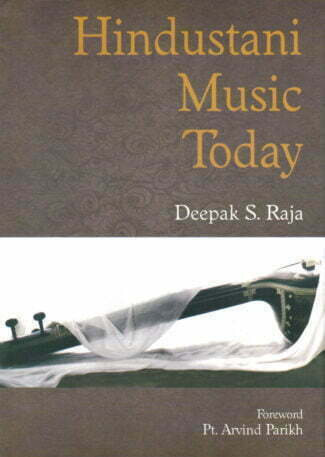
A panoramic view of Hindustani art music, for educated readers with some familiarity in it, with an informed perspective covering major genres of this musical stream, instruments in vogue, with a brief history, by an acclaimed author and musician.
Stating that Hindustani music should be rightly termed Art music and not classical music, the book begins by discussing the features of Art music and presents an approach to appreciating Hindustani music. It provides a detailed understanding of the components of the raga experience in Hindustani music, including their time theory and the role of Gharanas of the musical tradition.
It deals with genres of raga-based vocal music which have been performed over the last five centuries: Dhrupad, which has its moorings in devotional music; Khayal vocalism shaped by Sufi influences; the thumree, which originated as an accompaniment to the Kathak dance; and the tappa, adapted from the songs of camel drivers in the north-west frontier. It takes up the use of instruments in Hindustani music, especially the Rudra Veena, Sitar, Surbahar, Sarod, Santoor, the Shehnai, Pakhawaj, the Hawaiian Guitar and many others, giving an account of their origin, performing styles and lineages relating to them.
Throughout, the emphasis is on contemporary trends in Hindustani music and its prospects in the future. It mentions the significant practitioners of Hindustani music, both vocal and instrumental.
The volume will interest lovers of Indian music and also scholars who want to have a greater understanding of its traditions, its contemporary appeal and trends in practice.
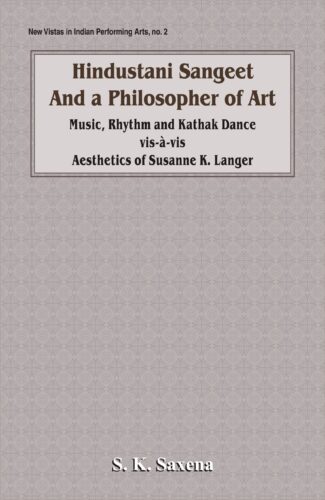
The book seeks to weigh some basic facts and concepts of Hindustani Sangeet (music, rhythm and Kathak dance) against the art theories of Susanne K. Langer, an eminent aesthetician of the recent past, incorporating numerous illustrative references to Hindustani sangeet.
The book is decidedly the very first of its kind. It seeks to weigh some basic facts and concepts of Hindustani sangeet (music, rhythm, and Kathak dance) against the art theories of Susanne K. Langer, an eminent aesthetician of the recent past; but nowhere without meticulous attention to the text of her writings. The expression theory of art has for long dominated the history of aesthetics. At the hands of Langer, however, the theory takes a new turn. She conceives of art not as a direct self-expression of the artist’s immediate affective state, but as a symbolic expression of his knowledge of what she terms variously as felt life, sentience, or forms of feeling. Drawing freely upon examples from the region of Hindustani sangeet, the present book accepts Langer’s protest against the popular view of artistic expression, but contends that there is a good deal in our music and dance which has nothing to do with feeling, and is admired simply because of its sweetness, clarity, shapeliness, and accordance with grammatical norms. In the chapter on music, while discussing Langer’s emphasis on commanding form in a total performance, the author proposes a quite new definition of raga which seeks to integrate the various points in its traditional characterizations. The third chapter too, which deals with Langer’s view of rhythm, is not merely explanatory, but ventures to propose a fresh and fairly defensible definition of rhythm. The closing chapter, devoted to dance, not only essays to meet some key objections to Langer’s writing on this art, but clarifies some atypical language that she uses in this context: apparition of vital powers; the dynamic image; virtual realities; and the created, superhuman dance-personality. But perhaps the two most striking features of the book are: first, a lucid exposition of the essentials of Langer’s aesthetics in the opening chapter; and, second, abounding illustrative references to Hindustani sangeet.

This book looks at Hindustani Sangeet that is, music, rhythm, and (Kathak) dance explicitly in relation to philosophy and philosophers of art. The other key features of this volume are a quite original (aesthetic) way of reflecting on Kathak dance, and a painstaking discussion of how exactly our music may be said to be spiritual.
There are three major ways of looking at Hindustani sangeet. An easy-to-follow discussion of its basic concepts is one. A truthful and sympathetic, yet not merely laudatory, account of the life and art of some of its masterly exponents is another. Both these approaches have been fairly common so far. The third way, which has not yet received the attention it deserves, tries to dwell upon Hindustani music, rhythm, and (Kathak) dance explicitly in relation to philosophy and philosophers of art. It is from this point of view that the present book should be welcome. It does not, however, overlook the first two approaches. Besides quite a few essays that explore the aesthetical aspects of Hindustani music, the book takes a renovative look at Kathak dance, and engages the reader in a discussion of how far our music can be regarded as spiritual. These and some other key features should make this book acceptable to both rasikas and musicologists.

A collection of fifteen scholarly articles, this volume talks about the development of convergences and divergences in Indian aesthetics under two broad topics – Theoretical Explorations and Applications – be it cinema, dance, drama, music, literature or sculpture.
A collection of fifteen scholarly articles, this volume focuses on the convergences and divergences which exist in Indian aesthetics, focusing both on Theoretical Explorations and their Applications. Indian aesthetics encompasses traditions and texts that focus on literary, visual, structural and performative productions of a wide range of art forms that delight, entertain, provoke their audience in ways that are relevant to the life. These art forms result in various responses such as delight, emotional relish, and enjoyment. In their convergence with other arts, different Indian art forms, be it cinema, dance, drama, music, literature or sculpture, have practised a “give and take” policy all through their history. Most of them are based on the rasa theory as the connecting thread. Talking about the divergences, the book details how different art forms emerged from a common root and shaped up as separate entities within the Indian framework, while embedding divergent viewpoints opening up the possibility of diverse views on the same concept. These developments also hold true for modern art forms like cinema. The volume provides illustrations taken from a wide range of art forms ancient and contemporary, talking about the diverse applications of Indian aesthetics across multiple art forms in recent times.

This book incorporates Prof. Friedmans lectures and discussions that were a part of the Inter-Cultural Dialogue at many levels. His major contribution is in developing an approach that is within the framework of the human image.
This book, with a foreword by Dr. Kapila Vatsyayan, incorporates Prof. Maurice Friedmans lectures, discussions and exchanges which took place in the Intercultural Dialogue at many levels. The integral dialogical approach of Prof. Friedman within the framework of the human image, coincides with the holistic vision of the ongoing work at the IGNCA. Prof. Friedmans major contribution in philosophy is in providing continuity to the new dialogical trend of thought. There was a time when philosophy was conceived as purely thought-oriented, self-oriented, and too far removed from the existential, natural order of human existence. The image of man that emerged from this abstraction was also a conceptual I. The new trend, gives priority to existence, experience, and an image of the human that precedes and develops through every type of personal encounter we have with the other. This experiential framework gives an orientation to philosophical anthropology, philosophy of art, philosophy of social sciences, philosophy of religion and moral philosophy. It rejects the distinction between first order and second order level and sees thought and reflection as in the process of existential becoming of the human. Professor Friedmans original contribution to philosophy may be indicated at different levels: 1) Developing a complete yet open-ended dialogical framework by pointing to the image of the human as central; 2) Bringing out, in a thoroughgoing way, the implications of the image of man for moral philosophy. This existential ethics, which is different from Sartre, is of great significance in our times; 3) Suggesting a new philosophy of literature by stressing the human image as a direction and not as an ideal in the literary works of Aldous Huxley, T.S.Eliot, Hermann Hesse; and, 4) Pointing to the important dimension of dialogical psychotherapy where the relationship between the therapist and the client is central; and, it is this meeting alone which may heal the atrophied personal center.

The book narrates the history of the Kathaka dance art: its origin, continuous evolution and struggle for existence from ancient to the medieval period. It discusses the influence of Kathakya Acarya, Sage Katha and his sampradaya on Kathaka, besides generic similarities between Rasalila and present-day Kathaka.
The book traces the history of Kathaka from ancient to the medieval period: its origin and continuous evolution in a struggle for existence through a process involving fusion, diffusion and adaptation. It studies its etymological meaning in a painstaking effort which involves a discussion on the influence of Kathakya Acarya, Sage Katha and the generic similarities between Rasalila, Hallisaka, Carcari, Rasa, and present-day Kathaka. It shows that Kathaka has an ancient origin and is an indigenous Indian dance. It deals with the three distinct sections that form the present-day Kathaka. Surveying a host of religious and secular literature including the Natyashastra, the Abhinaya Darpana and the Sangita Ratnakara and referring to sculptural reliefs from temples and illustrations from manuscripts including the Akbar-Nama, it undertakes a detailed and illuminating study of gestures, postures, movements and stances of Kathaka. An attempt to help readers gain a better insight into the Kathaka dance, the volume will interest practitioners and lovers of classical dance forms of India.

The book presents stylistic perspectives on the music of nineteen modern and contemporary Khayàla vocalists representing five important legacies (Gharànàs) which have guided vocal music for about 200 years in India. The book makes complex musicological concepts accessible to even non-academic readers.
Khayala Vocalism: Continuity Within Change presents stylistic perspectives on the music of nineteen modern and contemporary Khayala vocalists, representing various legacies which have guided vocal music for about 200 years. The book is the result of over five years of research, involving the painstaking analysis of over 500 recordings spanning almost a hundred years of Khayala vocalism. The nineteen vocalists are classified into five stylistic legacies, based on their history of tutelage and the stylistic tendencies evident in their music: Agra legacy, Gwalior-Agra confluence, Jaipur-Atrauli legacy, Kairana legacy, and Patiala legacy. Written by an author of impeccable credentials as a musician, researcher and writer, the book contains seven sections. While the first section serves as an introduction to the Khayala genre and to the various Gharanas, the last presents an annexure containing the various Khayala forms, a glossary of non-English terms rendered in italics, and an index. The intervening five sections deal with the history and stylistics of the five legacies and the music of the vocalists belonging to them. The book makes complex musicological concepts accessible to non-academic readers and contributes significantly to widening the understanding of contemporary trends in Khayala vocalism.
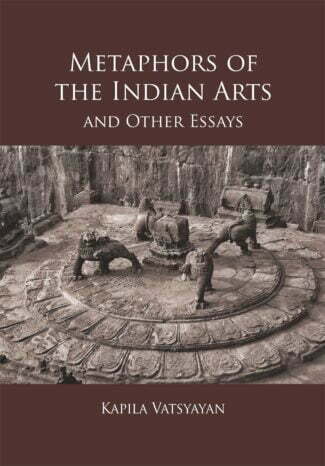
This anthology is a selection of writings of Dr Kapila Vatsyayans nearly four-decade long journey as an art critic and art historian. It reveals the distinct nature of Indian arts from the angle of the world-view in which they emerge. At the same time, it amply shows the theory of art and aesthetics which may enable us to to see the other traditions of art from our own window.
This anthology Metaphors of the Indian Arts and Other Essays is a selection of writings of Dr Kapila Vatsyayans nearly four-decade long journey as an art critic and art historian. It reveals the distinct nature of Indian arts from the angle of the world-view in which they emerge. At the same time, it amply shows the theory of art and aesthetics which may enable us to to see the other traditions of art from our own window. In a seminal article entitled Metaphors of the Indian Arts, the author identifies some fundamentals which permeate the Indian artistic traditions.
In the article entitled Mountain, Myth, Monuments Dr Vatsyayan discusses the significance of mountains and the sanctuaries, diversity of attitude and approaches to them in Indian context. She focuses on sacred mountains, especially Kailasa, which have dominated the Indian imagination for many millennia in the world of literature, architecture, sculpture, music and dance.
The attitude to the human body as also the self-consciousness of the relationship of the senses and the mind in diverse civilizations has been of special interest to the author for decades. In the article Early Evidence of Female Figures, Music and Dance, she points at essentials of treating the human body in Indian art, specially the female body, over a long span of history. She draws attention to the large measure of consensus on the identification of meaning of the particular or single image or relief, ranging from the examples from Mesopotamia to Assyria to Egypt and the figurines and statues of the Indus Valley, Mohenjo-Daro, Harappa and Mehergarh.
Further she returns to explicitly stating the ideational background of Indian aesthetics. Finally, she identifies certain motifs which have travelled across a vast geographical area, specially in South-East Asia.
Altogether, these essays will enable the reader to trace not only her journey but also her place in Indian art history as a carrier of a tradition of A.K. Coomaraswamy and Stella Kramrisch.
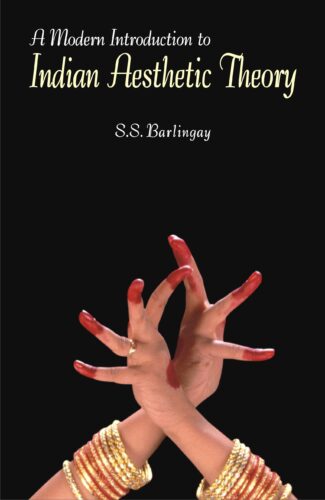
All arts in India owe their roots to the theoretical structure developed by Bharatamuni in his celebrated work Natyasastra. His theory of beauty is known as the theory of rasa. The present volume has shown how the insight of Bharata was developed by the classical scholars from Abhinavagupta to Jagannatha who propounded the theories with names like rasa, alamkara, riti, vakrokti, dhvani etc. to employ the theory of beauty from natya (drama) to kavya (poetry).
The foundation of the Indian aesthetic theory can be traced to Bharatamunis Natyashastra where he gave his theory of beauty (theory of rasa) which was later elaborately developed by learned scholars. In this work, Prof. Barlingay examines the development of the rasa theory by various authorities on art and aesthetics and finally presents his own critical understanding of it. The volume begins with a survey of the history of Indian art by examining painstakingly the relation between art and beauty, perception of time and space in art, and classification of arts. It then plunges into a detailed study of origin and development of rasa theory: from rasa in the Vedas and Upanishads to Bharatas rasa theory and perspectives of Abhinavagupta, Bhattatauta, Bhatta Lollata, Kuntaka, Dandin, Mammata, Vamana, Rudrata, Vishvanatha, Bhamaha, Jagannatha and others who enriched it further with their own theories. It explains how principles were employed and re-employed by the masters to reveal various meanings, inter-relationships, symbols, and perceptions of art. It highlights the salient features of each masters unique manner of interpretation of art concepts. The work is a must for scholars and students keen to study the fundamentals of concept and theory of Indian art, particularly with reference to drama and poetics.
| There are no products |